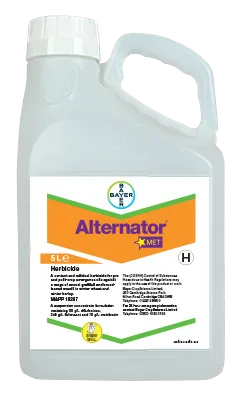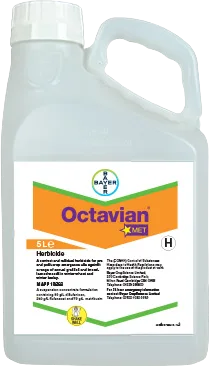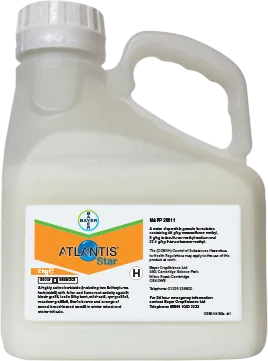Published on 26th January 2024
Local Insights
Managing variable crops in the west

Gareth Bubb looks at how variable crops can be managed this February in the west
Crop Progress
There is a huge variation in the way crops look across the western region from those that are or have been underwater where yields will likely have been compromised to crops that look decent.
Overall, wheat planting in the region is perhaps 20% down on intended. More wheat was being planted in January where land is drillable, while decisions were being made about some poorly established fields.
Gareth’s agronomy tips for February
1. Stick or twist with thin or patchy wheat crops?
Many will be making decisions about whether to keep or rip up wheat crops during January and into February. It’s not an easy decision in some cases, as there are a lot of factors to consider.
These include:
What’s already been spent on the crop?
How much it will cost to spray off?
Do you have seed available to replant?
Can you purchase seed and how much will it cost?
Cost of any further cultivations?
Cost of further treatments?
Impact of a later spring crop harvest on the rotation
Effect of spring droughts on a spring crop
My view would be to think carefully about those issues and consider whether the wheat in the ground, even with some poor patches in fields, can still make more than a spring crop? We do know that thin wheat crops can yield decently, with good agronomy to keep them green for as long as possible because you can manipulate wheat yields through the size and number of grains per ear.
That’s also true for oilseed rape, which compensates well during the spring, but less so for thin winter barley crops where yield potential will have been set and be difficult to increase.
2. What to do with unplanted areas?
Where you have a winter wheat variety that is still within its recommended latest drilling date, my advice, where conditions are right, would be to still drill it. Seed rates will need to be increased and remember that if planted after 1 February it will be classed as a spring wheat regardless of whether it is a winter variety. That does mean more restrictions what herbicides or rates you can use, and possibly other types of products too.
If you’re planning to grow a spring crop, and you’re using seed from last year’s harvest from the barn, then it will be worth getting it tested for seed borne diseases and germination levels and treating as necessary.
Another option could be the Sustainable Farming Incentive, which potentially could give a guaranteed level of income over the three years of an agreement. But check the details of the scheme carefully and consider the longer term implications for rotations before signing up.
3. Weed control options for wheat
As with establishment there is a range of scenarios regarding grassweed control in wheat depending on when it was drilled and what has happened so far.
If weather allows the sprayer to travel, there could still be a place for a residual herbicide application, where weeds are currently small and there is further germination expected. In that situation you might not want to go with your contact-acting herbicide yet, and there could be a place for using a metribuzin-containing product, such as Alternator Met or Octavian Met (diflufenican + flufenacet + metribuzin). These are mainly residual herbicides but do have a little bit of contact activity.
If you do decide to go with a contact-acting product, almost certainly based on mesosulfuron, and there is a lot of soil showing giving more space for weeds to come, then it could be worth adding a residual partner, but check labels carefully for which can be used.
I wouldn’t be too worried about soil temperatures when applying mesosulfuron products. There’s very often little windows in February when the weeds are smaller and you have an opportunity to apply a contact herbicide. If the weeds look like they are growing and it’s that type of weather – a good day with plenty of sunshine – then it’s the type of conditions where we’ve seen good activity in the past.
There are a number of mesosulfuron-containing products that can be used. Atlantis OD (mesosulfuron + iodosulfuron) can be used from GS12, but contains 12g/ha of mesosulfuron in the 400g/ha maximum dose.
Atlantis Star (mesosulfuron + iodosulfuron + thiencarbazone) can be used from 1 February, and contains a higher 15g/ha dose, which might be useful against difficult grassweeds, while Pacifica Plus (mesosulfuron + iodosulfuron + amidosulfuron) can be used at a 400g/ha rate (12g/ha mesosulfuron) from 1 February and then at a higher 500g/ha (15g/ha mesosulfuron) rate if you have bromes from 1 March.
In summary, be aware of which one you are using and check the labels carefully!
4. Monitor oilseed rape crops for light leaf spot
Similarly with other crops there are some good crops of oilseed rape and some very patchy ones. At this time of year, Phoma becomes much less of a concern, but it is when light leaf spot starts becoming a real issue often.
Many growers hope to wait until green bud before applying a fungicide but if you can get a light leaf spot spray on as the crop comes out of winter rather than waiting, it is helpful as this is a key time for controlling light leaf spot, which will continue to cycle and move up the plant.
If you’re not sure whether there are light leaf spot infections, then take some samples, put in a bag, keep it warm and see whether symptoms develop over a few days.
5. Early start for fungicides?
It’s pretty unlikely but with backward crops of wheat more at risk from yellow rust, keep an eye out for early infections. It would need to be extreme for you to have to spray at this time of year, and hopefully the frost will take care of any infections. Once you start spraying, you’re almost locked into a cycle of spraying every three to four weeks.
Barley yellow dwarf virus is another one that can still have an impact. Again the frosts will have helped, and once crops get to GS30 there’s no need to worry about control, but before then it is worth monitoring for aphids.
In winter barley, there can be more of a case for early disease control measures if diseases such as mildew, net blotch or Rhynchosporium are threatening to take out tillers. If you’re going to lose tillers then you might need to consider doing something, albeit this is still going to be extremely rare.






